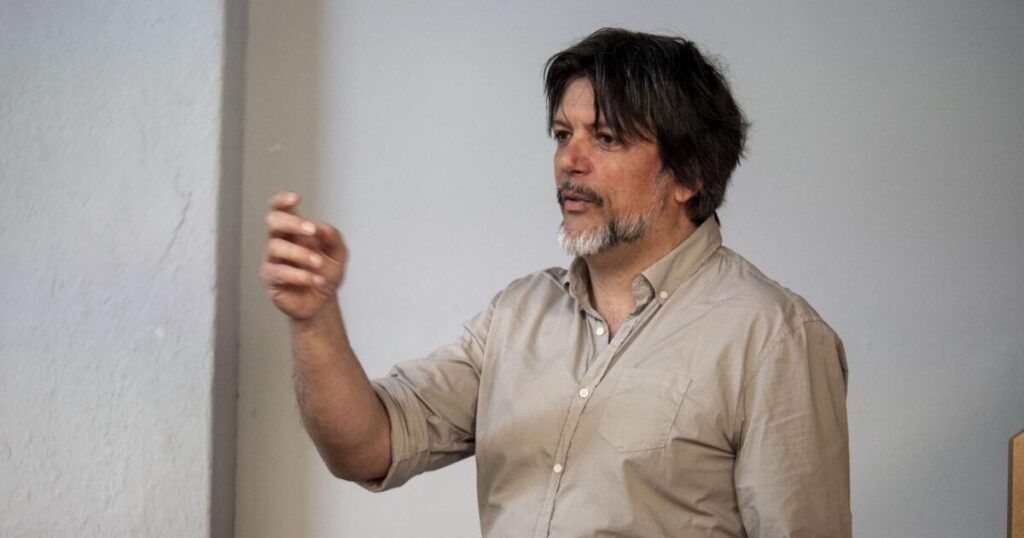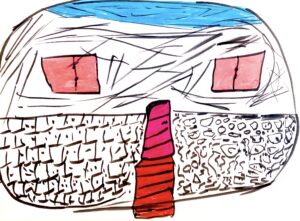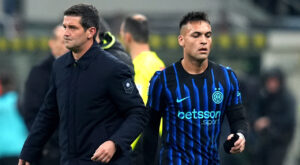
“There’s a boy, inside prisonwho chewed his paper because he didn’t like what he drew. One day he fell into a hole, that’s how he felt at that time. I noticed that the shape of the hole he drew was not closed, so I said to him, ‘look, you revealed the fact that you can get out of that hole’. That draw it is part of who we are, and often represents thoughts or sensations.”
Alessandro Bonaccorsi he lived in Ravenna and was a graphic designer, writer, trainer and facilitator. He is also the inventor of “Ugly Drawing”, a method designed for those who cannot draw, which frees people from conditioning and creates a new perspective on reality.
“A wonderful tool to think better, relax, have fun, understand, communicate, with a cheerful appearance that hides a philosophical path of personal growth,” Alessandro explains it. Who developed it after years of independent research, going through several university failures, becoming a semi-professional volleyball coach and graphic designer in a major graphics industry, to becoming a creative freelancer twenty years ago. At a certain point, the idea of a new way of drawing emerged, namely Ugly Drawings. It exploded on its social networks long before the pandemic (in 2017). Since then he taught it all over Italy, in dozens of coursesto nurses and managers, to teachers and employees, in associations, festivals, museums, companies, even universities.
A year ago he was called by “Terre Des Hommes” Foundation. for a project in Beccaria Prison in Milan. “They look for activities to make children understand that there are other ways of thinking and that they have an original approach,” he said. Il Disegno Brutto is one of the workshops proposed by the Terre des Hommes with Chance project (started with the support of Enel Cuore). A project that puts people at the center, regardless of their crimes, or their uniforms and what they want encourage dialogue between minors in prison, agents and operators offering new possibilities for expression, growth and mutual understanding. Alessandro started his first workshop, in January this year, consisting of seven meetings, which would then be repeated for two other courses.
 “We worked in the dining room, about fifteen kids at a time, I called them from the cell door. A cultural mediator from Arabicbecause many prisoners speak Arabic. The goal is to provide the possibility to create a new story about oneself, improve one’s identity and relationships with other people. Whatever they draw is fine, the aim is to let them escape, to make them communicate through signs, to keep working on the memory of their place of origin and on the imagination of possible futures.”
“We worked in the dining room, about fifteen kids at a time, I called them from the cell door. A cultural mediator from Arabicbecause many prisoners speak Arabic. The goal is to provide the possibility to create a new story about oneself, improve one’s identity and relationships with other people. Whatever they draw is fine, the aim is to let them escape, to make them communicate through signs, to keep working on the memory of their place of origin and on the imagination of possible futures.”
Ugly Image is a method that prioritizes these aspects. In particular, it helps the story of time, and also life, a theme that immediately emerges, explains Bonaccorsi. “From the first session it was out intolerance is closed therethe fact that time repeats itself in the same way. A boy drew a picture of a snake eating its own tail and some people locked him inside the snake.”
Another positive aspect of Disegno Brutto iscalming effect“Even children who have attention problems, who normally can’t sit still for a moment, sit for an hour drawing. I also find that many graphically illiterateFor example, they have difficulty making concentric circles, and are not used to writing and drawing. They have drawing skills left over from when they were ten years old, but they manage to express complex thoughts with uncertain or childish lines and figures.”
Over the course of two hours, the “teacher” gave few important instructions, suggested small exercises, and never uttered phrases like “You could do better.” We do not judge ourselves and we are not judged. Ugly Drawing is a method in which, even when making mistakes, one expresses oneself, and this creates trust, but also “relationships, even physical ones, the children hug me, we are in a habitat of calm and serenity, we manage to create an internal garden”.
During the trip “strong emotions emerged. There was a boy who after the second meeting told me that he would never come again, because everything he drew took him back to the past, a past where he was happy and which is no longer there. But he always stopped by to say hello, even if he didn’t sit down. However, this is also a relationship”.





